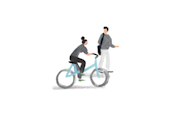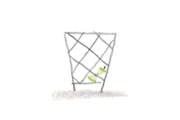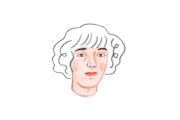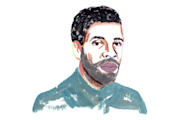One of the most challenging things about treating eating disorders is that they can so often go unnoticed.
Given our culture’s obsession with “health” and our idolization of thin bodies, unhealthy behaviors around eating and exercise can go unrecognized as such until they’ve taken a dramatic toll on the physical and psychological health of a person.
One eating disorder, in particular, consistently flies under the radar, despite growing concern from the medical community about its rise in incidence and the severity of its consequences. This is orthorexia, which is typically identified as an unhealthy obsession with “healthy” eating.
Eating healthfully seems benign enough—good for you, even—but for those who suffer with orthorexia, the restrictions they place on themselves around what, when, and how they eat can become so inhibitive as to deprive the body of the nutrients it needs to function, and even to survive.
What is orthorexia?
Orthorexia is an eating disorder characterized by an unhealthy obsession with healthy eating. In advanced stages, orthorexia symptoms are identical to those of anorexia—and those of starvation. And just like anorexia, orthorexia is not only physically and psychologically damaging, it can be fatal.
But because orthorexia is still fairly new to the list of recognized eating disorders, it is still widely misunderstood, and not always easily identified by friends and family.
Key differences between orthorexia and anorexia exist, however. Unlike people with anorexia, who are often preoccupied with being thin, the restrictions that orthorexic people put on themselves are often motivated by their own perceptions of health and virtue, with a large emphasis placed on “good” or healthy foods.
Perhaps the hardest part of the journey of recovery from orthorexia is knowing that it’s a journey.
Given that there is still limited research on orthorexia, it is not formally listed in the DSM, the manual used by psychiatrists and other mental and behavioral health professionals to diagnose psychological illnesses and disorders.
But orthorexia is recognized as an eating disorder by the National Eating Disorders Association (NEDA), which also offers several resources to help identify and treat orthorexia.
Orthorexia does meet many of the criteria for Avoidant Restrictive Food Intake Disorder (ARFID), which is included in the DSM-5 under the category of eating disorders, and a growing number of doctors and medical professionals are working to get orthorexia more widely recognized to further research and treatment into the potentially dangerous behaviors that come with it.
Even as research continues in the field of orthorexia, behavioral and mental health professionals who specialize in the treatment of eating disorders are sounding the alarm about how social media and restrictive dieting trends such as Paleo or Keto diets are accelerating the spread of the disorder, particularly among adolescents.

What are the signs of orthorexia?
According to NEDA, the warning signs and symptoms of orthorexia include the following:
Compulsive checking of ingredient lists and nutritional labels
An increase in concern about the health of ingredients
Cutting out an increasing number of food groups (for instance, all sugar, all carbs, all dairy, all meat, all animal products)
An inability to eat anything but a narrow group of foods that are deemed “healthy” or “pure”
Unusual interest in the nutritional value of what others are eating
Spending hours per day thinking about what food might be served at upcoming events
Showing high levels of distress when “safe” or “healthy” foods aren’t available
Obsessive following of food and “healthy lifestyle” blogs on Twitter and Instagram
Body image concerns may or may not be present or apparent
Given the preoccupation with healthy food and the assignment of “good” and “bad” values to types of food and eating behaviors, orthorexia also shares a number of traits commonly associated with obsessive-compulsive disorder (OCD), including excessive rumination and distress over what to eat when outside of an environment they can control (such as at a restaurant).
Besides avoiding specific foods or categories of food, people with orthorexia often spend excessive amounts of time researching and reading about food and nutrition issues, and can spend hours examining food labels at the supermarket.
What is the treatment for orthorexia?
Orthorexia is treated similarly to other eating disorders such as anorexia and bulimia, and those who are diagnosed with orthorexia often respond well to talk therapy.
Both cognitive-behavioral therapy (CBT) and mindfulness can be effective in treating people exhibiting symptoms of orthorexia.
Perhaps the hardest part of the journey of recovery from orthorexia is knowing that it’s a journey. That’s where tools like CBT and Acceptance and Commitment (ACT) therapy can be especially useful in recognizing triggering situations and the harmful behaviors that follow, and in practicing compassion towards oneself.
Harder still is watching others we love exhibit behaviors that look very much like orthorexia or other eating disorders, and not knowing how to address it.
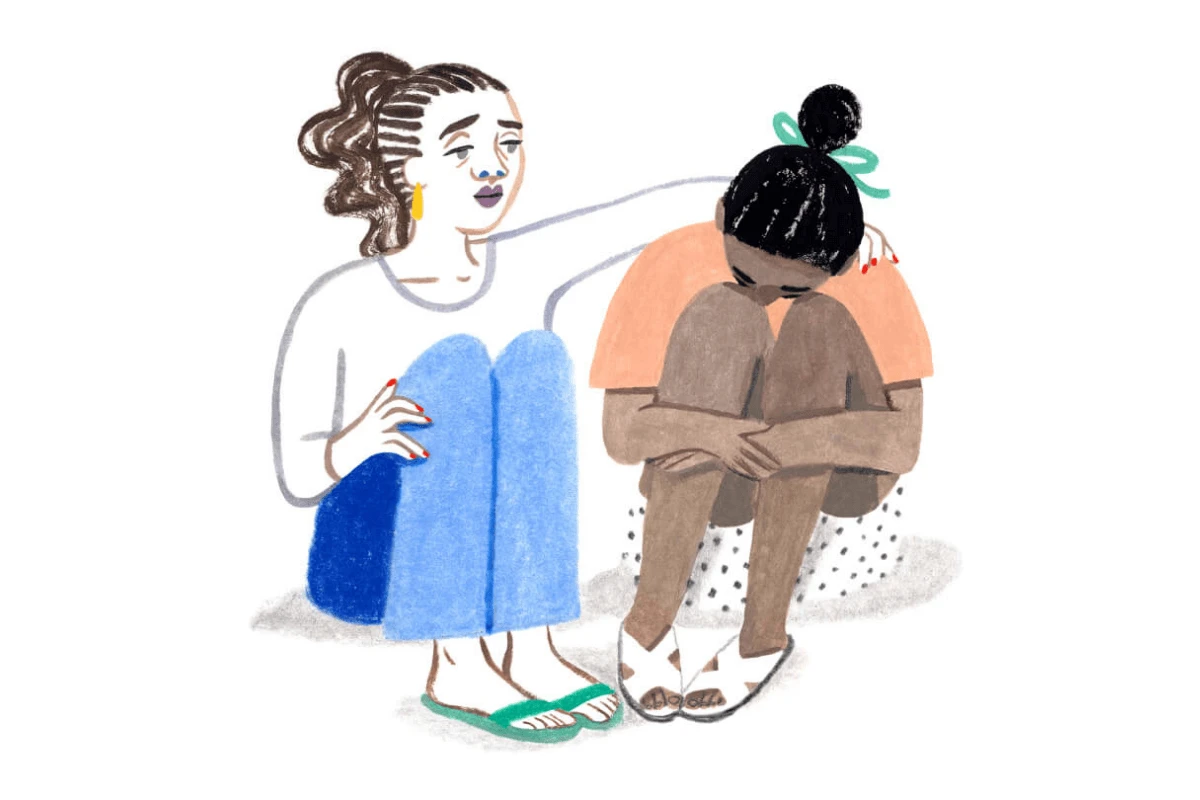
How do you help someone who refuses to eat?
If you think a loved one might be exhibiting symptoms of orthorexia or another eating disorder, it’s important to be empathetic and not critical in your approach.
Even what many people think of as a compliment or friendly banter, such as telling someone they “look great,” can cause someone with an eating disorder to feel judged about the size of their body and can trigger unhealthy behaviors. Likewise, commenting on someone’s food choices, or lack thereof, can backfire. Instead, try to focus on how they might be feeling.
It’s okay to ask if everything is okay, and if they want to talk about it. Know that you likely won’t have the answers to solve what’s bothering them in that moment—just listening is more important.
You can gently suggest that they try talking to a therapist or a medical professional if they think that their attitudes and behaviors around food are getting in the way of enjoying their life.
Finally, educate yourself about eating disorders. Try to be aware of how unhealthy behaviors around eating, food restriction, and body image are glamorized by pop culture.
Orthorexia resources
More resources on eating disorders can be found below:
The NEDA Helpline offers a phone hotline for information, support and treatment options for you or a loved one five days per week at the following number: 1-800-931-2237.
The National Alliance on Mental Illness (NAMI) offers more information on eating disorders and links to find out about free support groups near you on their website.
The National Association of Anorexia Nervosa and Related Disorders (ANAD) offers a free helpline for anyone who think they or a loved one may have an eating disorder at the following number: 1-800-577-1330, and also has several educational and support resources on their website.
If your attitude or behavior towards food are getting in the way of living a happy life, consider seeing a mental health professional. Monarch can help you find a therapist that specializes in treating eating disorders.
Angeles. (2012, January 9). Orthorexia: Where Eating Disorders Meet OCD - Part 2. Retrieved December 1, 2020, from OCD Center of Los Angeles website: https://ocdla.com/orthorexia-eating-disorders-ocd-2-1981#:~:text=Cognitive%2DBehavioral%20Therapy%20(CBT),and%20the%20foods%20they%20eat.
Avoidant Restrictive Food Intake Disorder (ARFID. (2017, February 26). Avoidant Restrictive Food Intake Disorder (ARFID). Retrieved November 30, 2020, from National Eating Disorders Association website: https://www.nationaleatingdisorders.org/learn/by-eating-disorder/arfid
Cohen, M. (2020, April 23). How to Help Someone With an Eating Disorder. Retrieved November 30, 2020, from Good Housekeeping website: https://www.goodhousekeeping.com/health/wellness/a32022987/how-to-help-someone-with-an-eating-disorder/
Ducharme, J. (2020, January 2). Countless People Are Struggling With an Eating Disorder Doctors Can’t Diagnose. Retrieved November 30, 2020, from Time website: https://time.com/5756757/orthorexia-clean-eating/
Dunn, T. M. (2020). Orthorexia Nervosa. Retrieved November 30, 2020, from Psychiatric Times website: https://www.psychiatrictimes.com/view/orthorexia-nervosa
Dunn, T. M., & Bratman, S. (2016). On orthorexia nervosa: A review of the literature and proposed diagnostic criteria. Eating Behaviors, 21, 11–17. https://doi.org/10.1016/j.eatbeh.2015.12.006
House, C. (2018, March 12). Orthorexia Symptoms & Signs. Retrieved December 1, 2020, from Carolina House website: https://www.carolinaeatingdisorders.com/eating-disorders/orthorexia/signs-symptoms/
Orthorexia. (2017, February 26). Orthorexia. Retrieved November 30, 2020, from National Eating Disorders Association website: https://www.nationaleatingdisorders.org/learn/by-eating-disorder/other/orthorexia
Orthorexia: Healthy Eating or an Eating Disorder? (2020). Retrieved November 30, 2020, from Psychology Today website: https://www.psychologytoday.com/us/blog/beauty-sick/202008/orthorexia-healthy-eating-or-eating-disorder
Petre, A. (2020, April 2). Orthorexia: When Healthy Eating Becomes a Disorder. Retrieved November 30, 2020, from Healthline website: https://www.healthline.com/nutrition/orthorexia-nervosa-101#what-is-orthorexia
Wilksch, S. M., O’Shea, A., Ho, P., Byrne, S., & Wade, T. D. (2019). The relationship between social media use and disordered eating in young adolescents. International Journal of Eating Disorders, 53(1), 96–106. https://doi.org/10.1002/eat.23198


